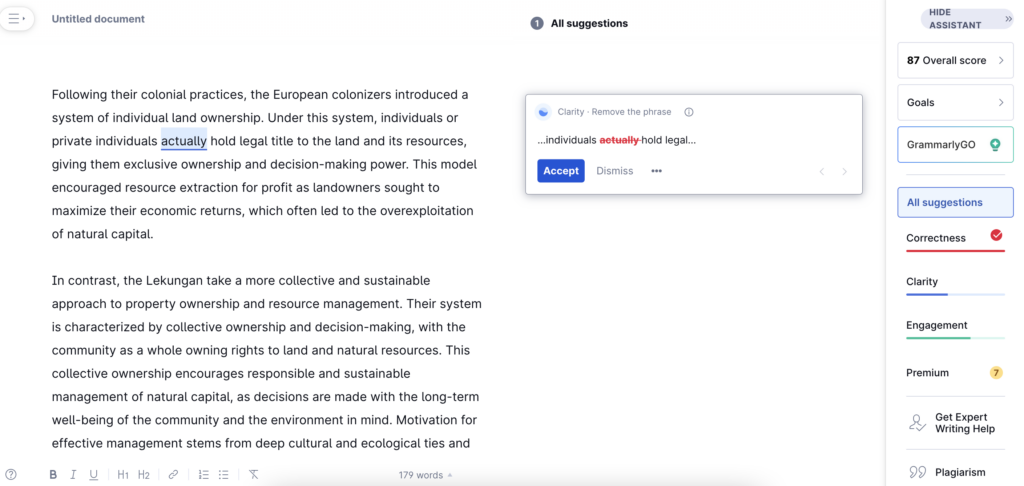As a student, my perspective on the use of AI applications in education focuses on how these tools can enhance my learning experience, while also considering the potential challenges and ethical implications.
I have used AI tools such as language learning apps (e.g. Duolingo) that adapt to my learning pace.
Grammarly has been helpful in improving my writing skills.
chatgpt helps me plan my study ideas and provides some new ideas when I don’t have a clue.
here’s a screenshot from when used Grammarly

Grammly. (2023. Sep. 18). [Grammly response to coursework]. https://app.grammarly.com/ddocs/2187545330/
In my opinion, when integrating AI tools into educational institutions, one should consider: the secure handling of student and staff data to prevent unauthorized access or disclosure. (Data privacy and security)
Ensure that AI tools are used to support, not replace, human teaching and interaction.
Avoid over-reliance on AI for critical tasks such as assessment and evaluation. (Ethical Use and Integrity)
Artificial intelligence is well suited to processing and analyzing large data sets, as well as automating repetitive tasks, increasing efficiency, and allowing human workers to focus on more complex and creative tasks. AI-powered tools such as speech recognition and language translation can make the technology easier to use for different groups of people.
But AI should not be used to replace human judgment in key decisions: it should support, not replace, human decision-making in key areas such as legal judgment, medical diagnosis, and ethical decision-making.
The use of mobile data in revenue mobility charts can enhance understanding by providing a clearer, more engaging, and comprehensive view of the data, particularly in terms of its evolution over time. Mobile data tends to be more engaging. It draws attention in a way that a static image cannot capture, making it more likely that the viewer will take the time to understand the data presented. Static charts, while still useful, may not convey the same level of depth and immediacy.
Benjamin Breen’s medieval plague simulation seems to be a highly detailed and historically accurate game. References are made to real locations (e.g. Damascus in 1348), historical figures (e.g. Ibn al-Khatib), and authentic medieval treatments. It effectively utilizes elements of role-playing games to immerse players in the experience of living through the plague of medieval Damascus. The game’s focus on historical accuracy enhances its educational value through the use of authentic locations, characters, and medieval therapies. The turn-based system, life value, and inventory management encourage strategic thinking, while the narrative-driven approach and inclusivity of primary sources make the experience engaging and immersive.
Leave a Reply
You must be logged in to post a comment.